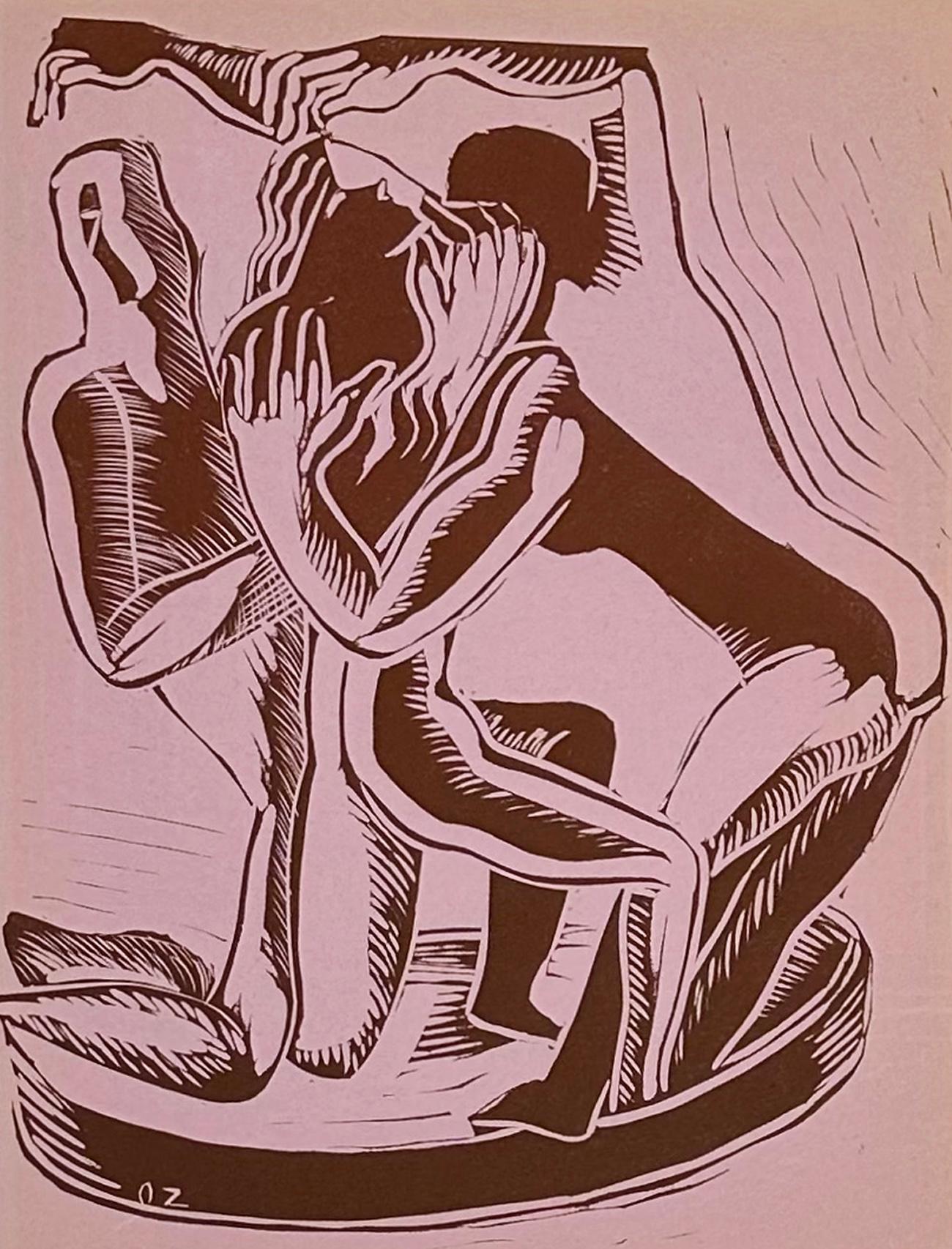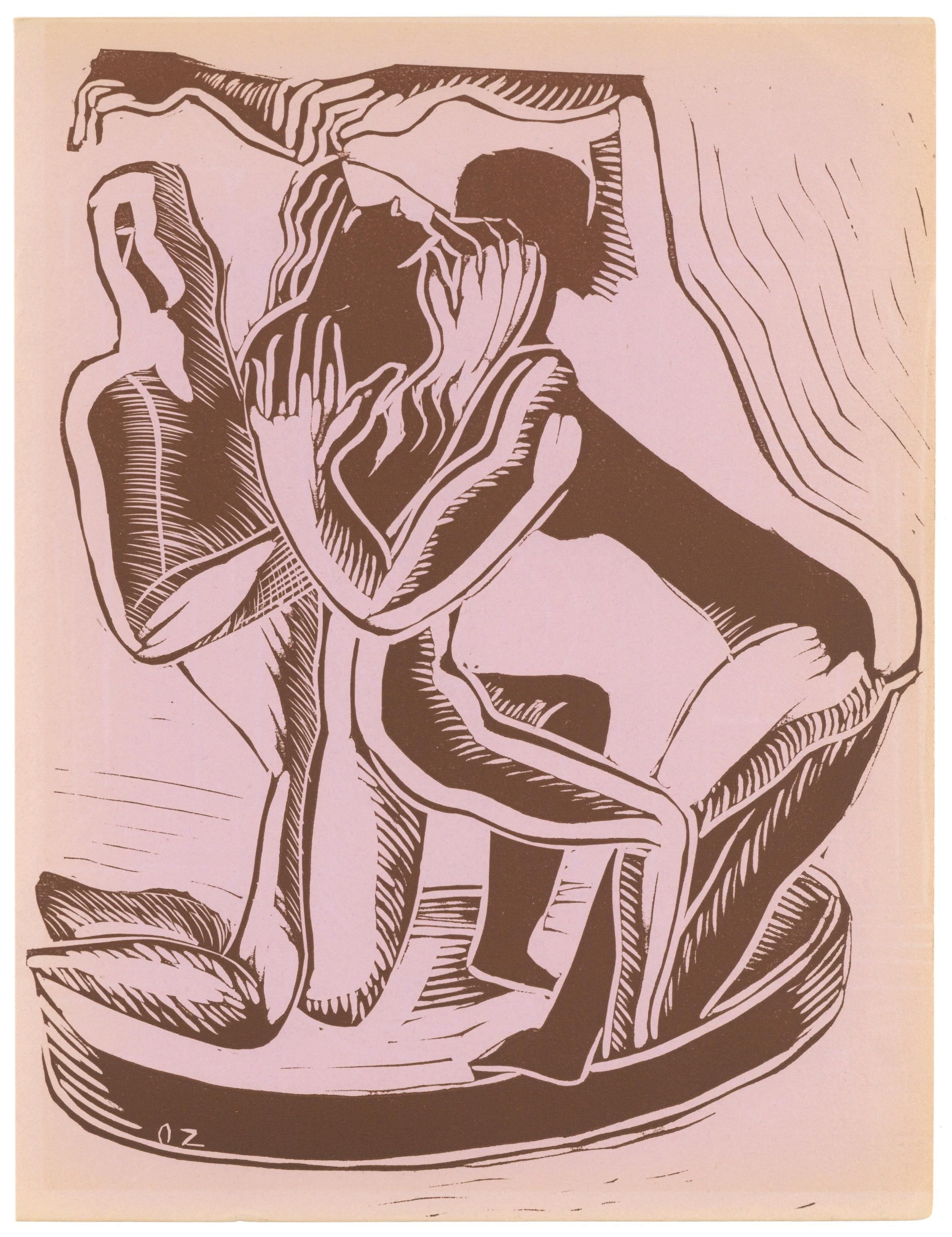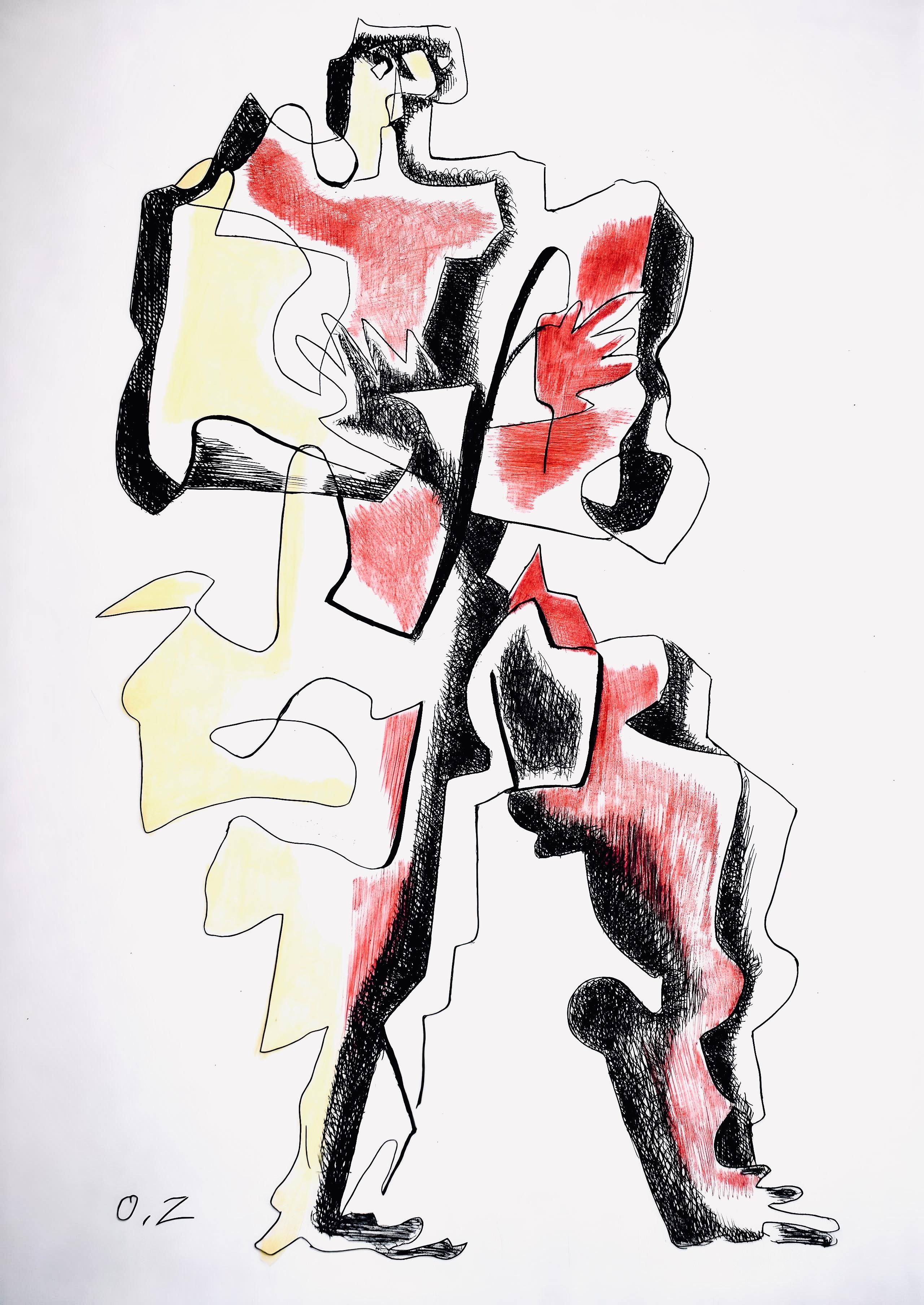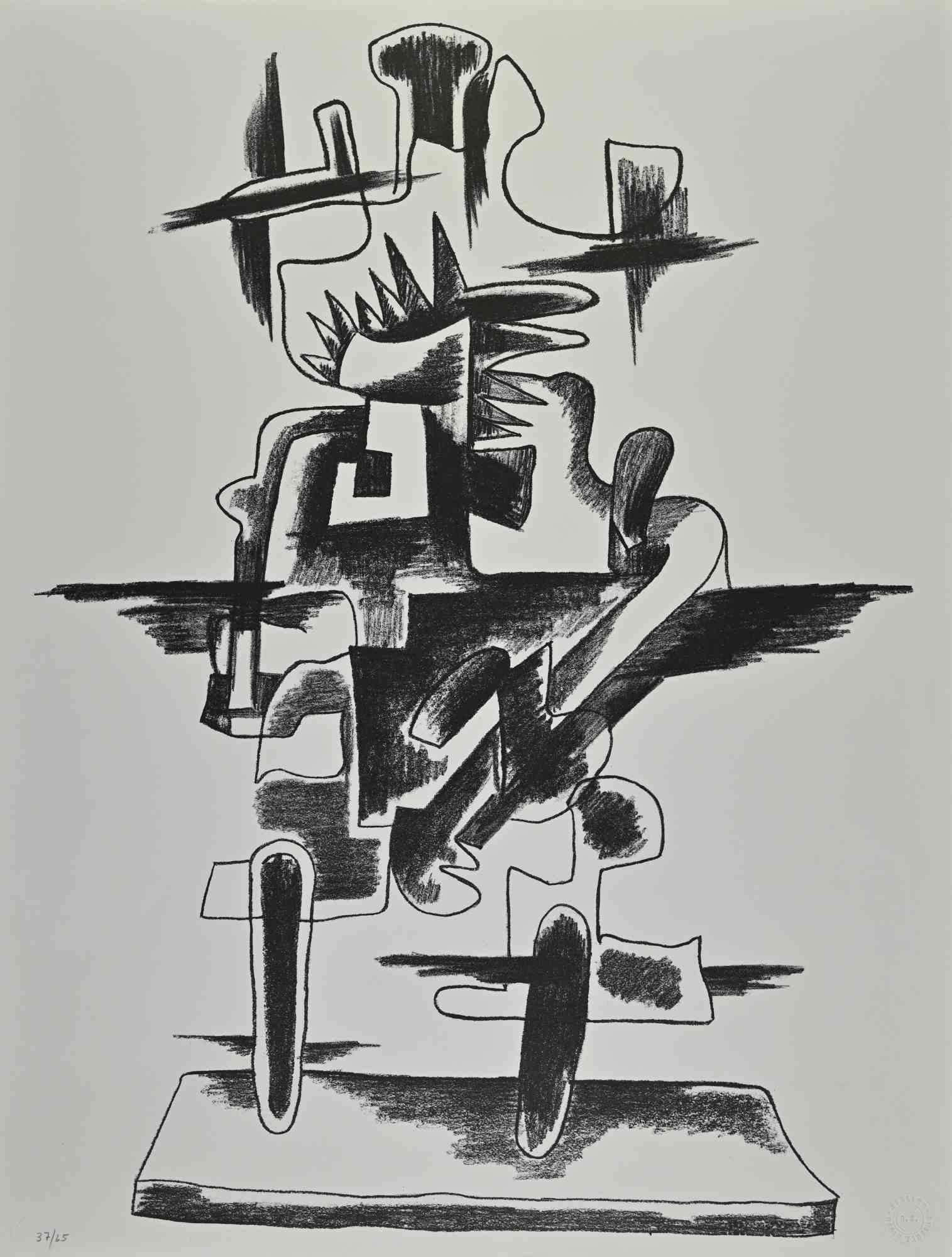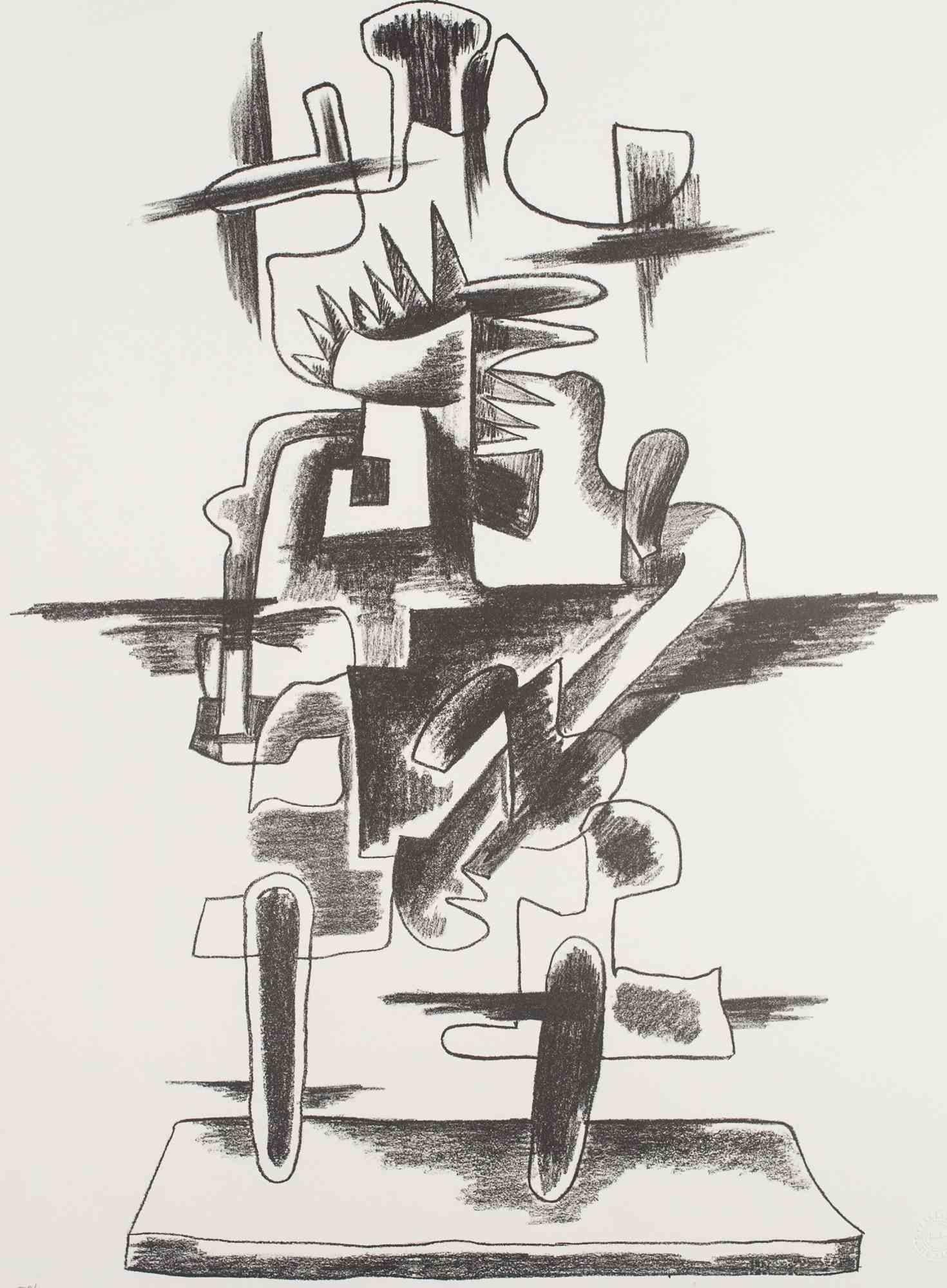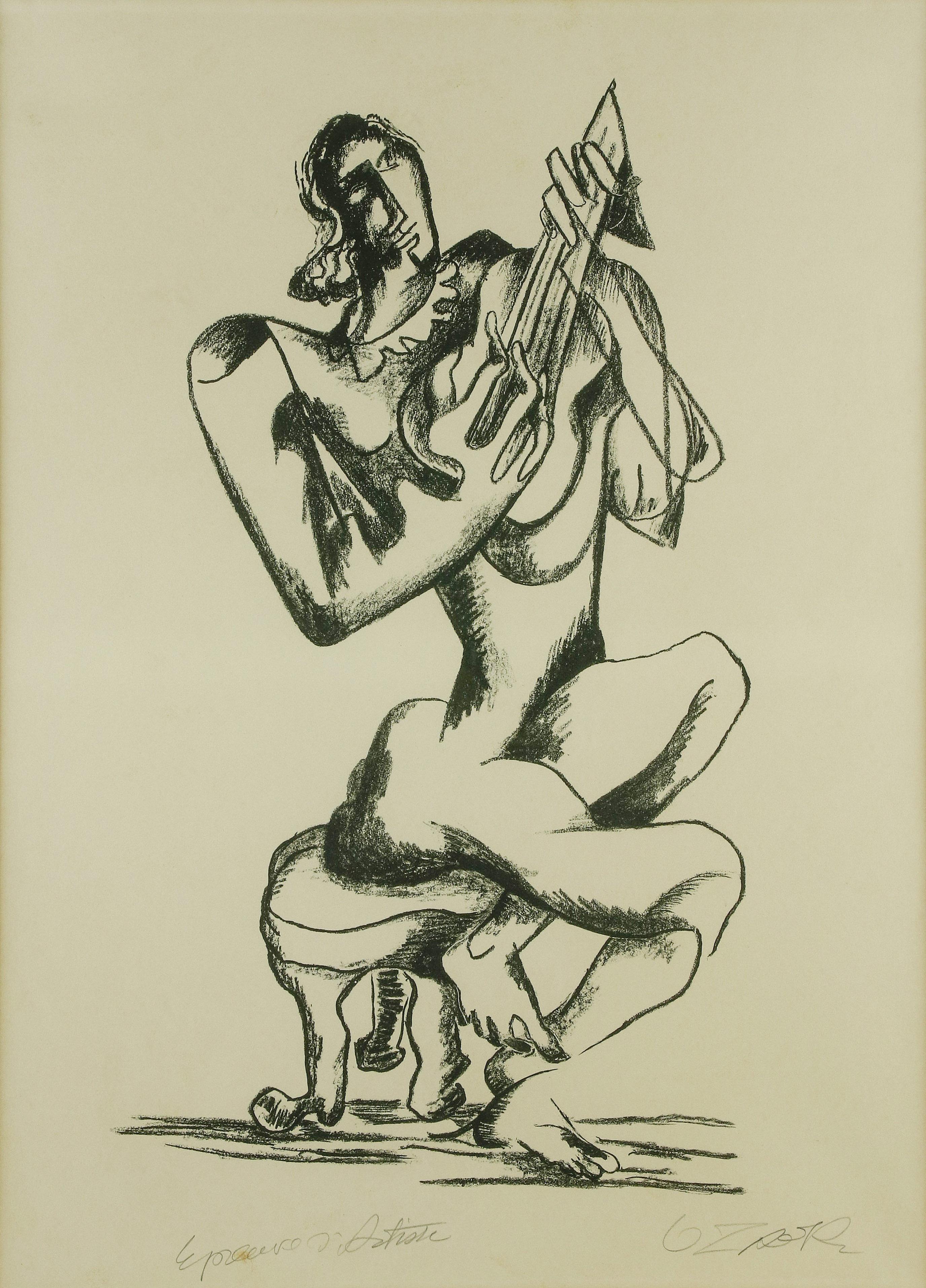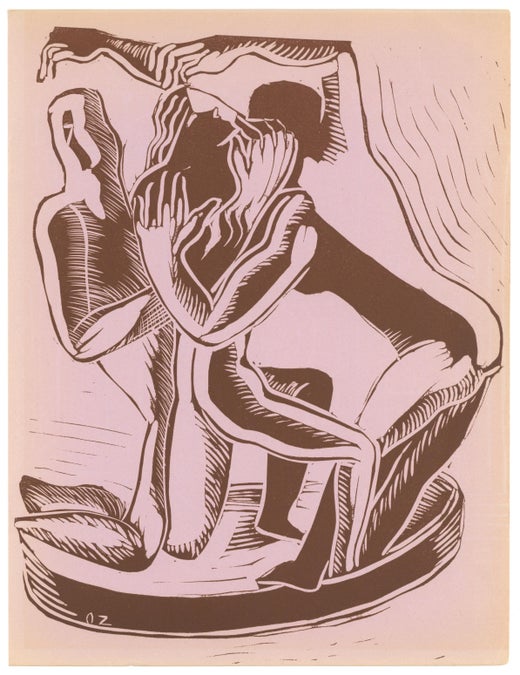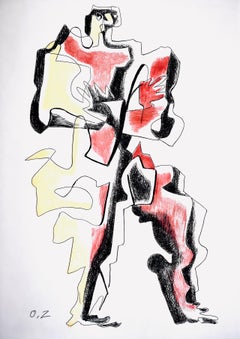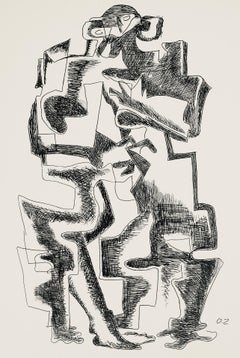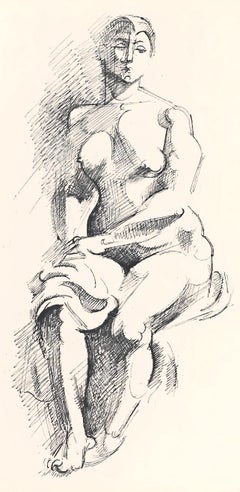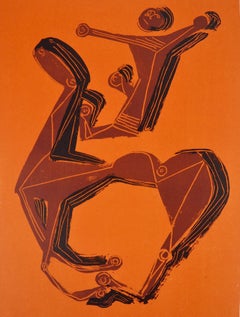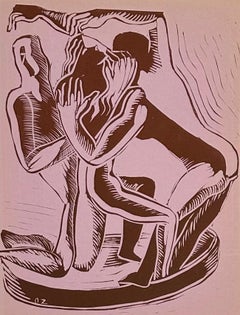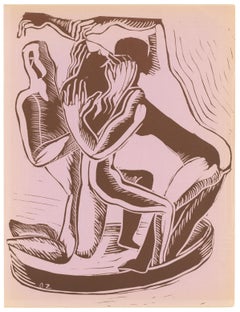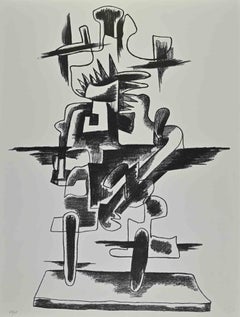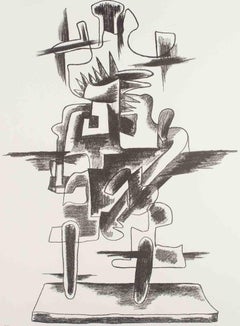This exquisite linocut by Ossip Zadkine (1890–1967), titled Les trois graces (The Three Graces), from the album XXe siecle, Chroniques du jour, 13 rue Valette (5e), Directeur G. di San Lazzaro, Sommaire du no. 4, Noel, 1938, originates from the 1938 edition published by Gualtieri di San Lazzaro, editeur, Paris, in collaboration with Societe Internationale d'Art XXe siecle, Paris, and printed by Mourlot Freres, Paris. Les trois graces exemplifies Zadkine’s sculptural sensibility on paper, merging rhythmic abstraction and human form into a lyrical meditation on harmony, movement, and emotion.
Executed as a linocut on velin paper, this work measures 12.5 × 9.75 inches (31.75 × 24.77 cm). Signed in the plate and unnumbered, as issued. The edition exemplifies the superb craftsmanship of Mourlot Freres, Paris.
Artwork Details:
Artist: Ossip Zadkine (1890–1967)
Title: Les trois graces (The Three Graces), from the album XXe siecle, Chroniques du jour, 13 rue Valette (5e), Directeur G. di San Lazzaro, Sommaire du no. 4, Noel, 1938
Medium: Linocut on velin paper
Dimensions: 12.5 × 9.75 inches (31.75 × 24.77 cm)
Inscription: Signed in the plate and unnumbered, as issued
Date: 1938
Publisher: Gualtieri di San Lazzaro, editeur, Paris, in collaboration with Societe Internationale d'Art XXe siecle, Paris
Printer: Mourlot Freres, Paris
Catalogue raisonne references: Zadkine, Ossip. Catalogue de l’œuvre grave et lithographie. Paris: Andre Sauret, 1962, illustration 16
Condition: Well preserved, consistent with age and medium
Provenance: From the album XXe siecle, Chroniques du jour, 13 rue Valette (5e), Directeur G. di San Lazzaro, Sommaire du no. 4, Noel, 1938, published by Gualtieri di San Lazzaro, editeur, Paris
About the Publication:
Gualtieri di San Lazzaro's XXe Siecle (Twentieth Century) was one of the most influential art journals of the modern era, founded in Paris in 1938 as a platform for the greatest painters, sculptors, and writers of the 20th century. San Lazzaro, a visionary editor, critic, and champion of modernism, believed that art and literature should coexist as expressions of a shared human imagination. Under his direction, XXe Siecle became a cultural bridge between Europe and the wider world, publishing special issues devoted to leading figures such as Picasso, Matisse, Chagall, Braque, Calder, Miro, Kandinsky, and Leger. Each edition combined essays by renowned critics and poets with original lithographs printed by the foremost ateliers of Paris, including Mourlot, Arte, and Bellini, creating a uniquely rich dialogue between text and image. Through XXe Siecle, San Lazzaro preserved the creative spirit of the avant-garde during and after World War II, championing freedom of expression and the evolution of abstraction, Surrealism, and modern thought. Over nearly four decades, the journal shaped international taste and defined the intellectual landscape of postwar art publishing. Today, XXe Siecle remains celebrated for its extraordinary synthesis of art, literature, and design, an enduring testament to Gualtieri di San Lazzaro's belief that the visual arts are the soul of the modern age.
About the Artist:
Ossip Zadkine (1890–1967) was a Russian-born French sculptor and painter whose masterful fusion of Cubism, Expressionism, and lyrical humanism established him as one of the most visionary sculptors of the 20th century. A poet of form and rhythm, Zadkine transformed the fragmented geometry of Cubism into a deeply emotional language of movement, structure, and spiritual resonance. Born in Vitebsk, Belarus (then part of the Russian Empire), Zadkine studied in London before settling in Paris in 1910, where he immersed himself in the city’s avant-garde circles among Pablo Picasso, Alexander Calder, Alberto Giacometti, Salvador Dali, Joan Miro, Wassily Kandinsky, Marcel Duchamp, and Man Ray—artists who, like him, redefined the boundaries of modern expression. Influenced by the innovations of Picasso and Braque and by the primal vitality of African and Cycladic art, Zadkine extended Cubism into three dimensions, creating sculptures that merged analytic structure with organic rhythm. His early carvings in wood and stone fragmented and reassembled the human form, infusing abstraction with warmth, emotion, and a sense of life’s continuity. Serving as a stretcher-bearer in World War I, Zadkine witnessed the destruction of humanity firsthand, an experience that would permeate his art with themes of suffering, resilience, and rebirth. After the war, he became a central figure in the Ecole de Paris, his works of the 1920s and 1930s blending geometric dynamism with a lyrical sensuality that bridged modernism and mythology. His sculptures—such as Orpheus, The Violinist, and Reclining Woman—exemplified his belief that art was “the architecture of emotion,” where mass and void coexisted in harmony. During World War II, Zadkine fled occupied France for New York, teaching at the Art Students League and influencing a generation of young sculptors before returning to Paris to create his greatest masterpiece, The Destroyed City (1951–1953), a monumental bronze memorial in Rotterdam commemorating the devastation of war. The work’s hollow torso and outstretched arms became a universal symbol of both anguish and transcendence, epitomizing his lifelong belief in art’s power to restore humanity to modern life. His mature style combined structural innovation with an organic lyricism that inspired Henry Moore, Barbara Hepworth, Lynn Chadwick, Eduardo Paolozzi, and Isamu Noguchi, while his emphasis on rhythm and unity influenced the trajectory of modern sculpture and design. Zadkine’s later years were devoted to teaching at the Academie de la Grande Chaumiere and refining his vision of art as a dialogue between nature, form, and spirit. His sculptures, drawings, and reliefs—held today in the Musee Zadkine (Paris), the Museum of Modern Art (New York), Tate Modern (London), and the Centre Pompidou (Paris)—embody a universal language of renewal and compassion. Standing alongside Pablo Picasso, Alexander Calder, Alberto Giacometti, Salvador Dali, Joan Miro, Wassily Kandinsky, Marcel Duchamp, and Man Ray, Ossip Zadkine remains one of the defining sculptors of modern art—a visionary who reconciled fragmentation and unity, intellect and emotion, to express the indomitable strength of the human soul. His highest auction record was achieved by Torse d’homme (circa 1920–1922), which sold for $3.43 million USD at Christie’s, New York, on November 15, 2017, reaffirming his enduring importance as one of the most emotionally profound, structurally innovative, and collectible sculptors of the 20th century.
Ossip Zadkine Les trois graces (The Three Graces), Zadkine XXe siecle, Zadkine 1938 linocut, Zadkine Mourlot, Zadkine velin paper, Zadkine abstraction, Zadkine collectible print.
